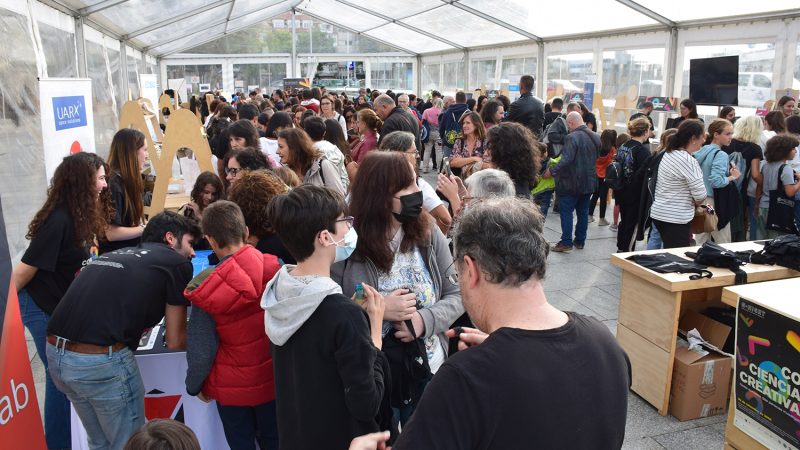The Marine Research Centre of the University of Vigo participated last Friday in a evening of scientific dissemination with the celebration of the Galician Night of Researchers (G-Night), an initiative coordinated by the University of Vigo to bring scientific knowledge and research to all citizens of Galicia.
The G-Night took place simultaneously in thirty locations spread across the seven main Galician cities: Vigo, Ourense, Pontevedra, Santiago, A Coruña, Ferrol and Lugo. The consortium, led by UVigo through the Scientific Culture Unit, is made up of ten partners, including the universities of Santiago de Compostela and A Coruña and Galician research organisations.
In total, there were more than 70 activities of scientific dissemination, leisure and entertainment that took science to the street and within the reach of all citizens. Among these activities, the CIM participated in the scientific expo-fair that took place in the Berbés square, in the informative talks and lectures that took place in different educational centres, bars and cafés of the cities and in the scientific trips on board the Inndaga research vessel.
Both Valderrama and Rubio were very satisfied with the reception of this initiative among the citizens, with hundreds of people, mainly families, who from mid-afternoon filled the tent in this second G-Night organised by UVigo under the Marie Sklodowska Curie Actions label. The aim, emphasised the Vice-Chancellor of Communication, is “to awaken vocations, to bring the public closer to what is being done in research at the University and its R+D+i centres in an experiential and playful way, and to do so for a mass audience, both for children at the fair and for adults at the talks in the bars”.
Spreading science with a creative conscience
At the science expo-fair, the research staff showed their lines of work through a dozen experiments and workshops. Among them, Paloma Morán showed children under 10 how a DNA double helix is constructed, while the staff of the Animal Geology group presented the biodiversity of soil and the functioning of its organisms with the workshop “discover soil life with us”.
Marine science spread to other locations in the city, such as the Vitruvia café, where the public was able to attend a talk by Victor Hernando, who spoke about plastic pollution in the marine environment.
In addition to the activities on land, the G-Night programme also included workshops in the estuary, with three scientific trips led by the CIM scientific staff on board the Inndaga survey vessel. During these outings, a dozen people were able to learn about the different techniques for sediment sampling and characterisation of the physical properties of the water and the seabed.
The activities were funded by each participating entity and supported by the Xunta de Galicia, Muncyt, the National Museum of Science and Technology, and the scientific museums of A Coruña.

